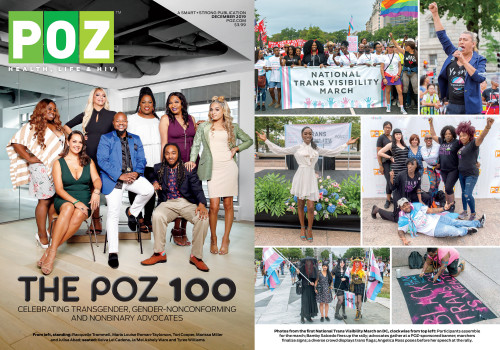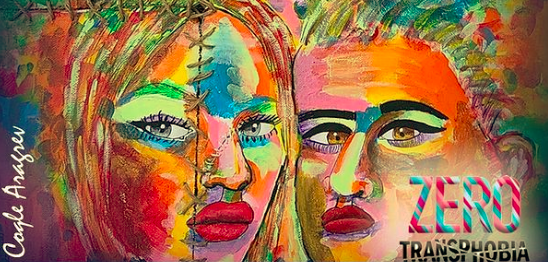Saturday, November 20, marks the annual Transgender Day of Remembrance 2021. It is the culmination of Transgender Awareness Week.
Our 2021 report on fatal violence against trans people reveals disturbing trends:
— Human Rights Campaign (@HRC) November 18, 2021
-66% of the victims were Black women
-86% of the victims were people of color
-69% of the victims were killed with a gun #TransDayOfRemembrance #TransAwarenessWeek https://t.co/gl42ElJ3Ic
The week marks a time to celebrate transgender people and support their fight against inequality and discrimination and to educate people about related issues. Community organizations across the globe hold conferences, digital events and campaigns. Search #TransAwarenessWeek on social media to see how you want to take part.
Happy #TransAwarenessWeek!
— GLAAD (@glaad) November 13, 2021
This is a week to celebrate transgender people and lift up and take action around the issues impacting the community. https://t.co/ouD975nVvP pic.twitter.com/yJ3cU9B0nm
For example, the Hispanic Health Network and the Latino Commission on AIDS promote a “Zero Transphobia” campaign throughout the week. This year’s theme is “Uplifting Trans and Gender Queer Lives” and features the artwork of Peruvian artist Coqle. “Zero Transphobia” virtual events include:
Celebrate: November 16, 2021, 1 p.m ET
This first session will focus on celebrating Trans and Gender Queer lives, identities and journeys. We will host a panel with various Trans and Gender Queer leaders from diverse backgrounds from across the United States and Puerto Rico. During this session, we will discuss and celebrate major achievements for the Trans and Gender Queer movement and communities.
Support: November 17, 2021, 1 p.m. ET
On the second day, diverse activists of the Trans and Gender Queer community will discuss ways we can provide support to Trans, Gender-Nonconforming and Nonbinary (TGNCNB) communities, agencies and efforts.
Protect: November 18, 2021, 1 p.m. ET
For our final webinar, we will explore ways to protect TGNCNB families, networks and individuals. Panelists include Trans and Gender Queer families that will share their stories and their views on how to protect TGNCNB folks.
View this post on Instagram
According to the Centers for Disease Control and Prevention, nearly 1 million people identify as transgender in the United States, which has a total population of about 328 million. HIV remains a prevalent health issue among the transgender community. Adult and adolescent transgender people made up 2% (601) of new HIV diagnoses in 2018. And according to the POZ Basics on HIV and Transgender People:
A meta-analysis from 2019 found that an estimated 14% of trans women and 3% of trans men in the United States are living with HIV. This proportion rises to 44% for Black trans women and 26% for Latina trans women and falls to 7% for white trans women. Previous estimates suggested that around 20% to 30% of U.S. trans women were HIV positive. Globally, trans women are about 49 times more likely than non-trans people to have HIV.
As we move closer to Transgender Day of Remembrance, it is important that we honor the people who have been attacked just for being themselves.
— AIDS United (@AIDS_United) November 15, 2021
And then we must continue the fight as anti-trans legislation continues to be introduced across the U.S. https://t.co/aBx1cZu28X
Visibility is another challenge. A 2021 poll by the Pew Research Center finds that 42% of adult Americans say they know someone who is transgender; this is an increase from 37% in 2017. At the same time, Americans have not grown more comfortable using gender-neutral pronouns—about half of poll respondents said they’re “very comfortable” using such pronouns, and 48% said they would feel very or somewhat uncomfortable doing so.
Sadly, violence against transgender people, especially transgender women of color, remains an injustice. The LGBTQ advocacy group Human Rights Campaign (HRC) tracks fatal incidents against transgender and gender-nonconforming people. In 2020, HRC recorded 44 fatalities, the most since the organization began tracking such data. So far this year, 46 transgender or gender-nonconforming people have been killed; most of them were Black or Latina transgender women. You can read about each of them on HRC.org.

The fold-out cover of POZ, December 2019
In 2019, the POZ 100 celebrated both HIV-positive and -negative transgender, gender-nonconforming and nonbinary advocates. Check out the content of that year-end issue for inspiring and informative articles and profiles, including a look at the National Trans Visibility March.







Comments
Comments